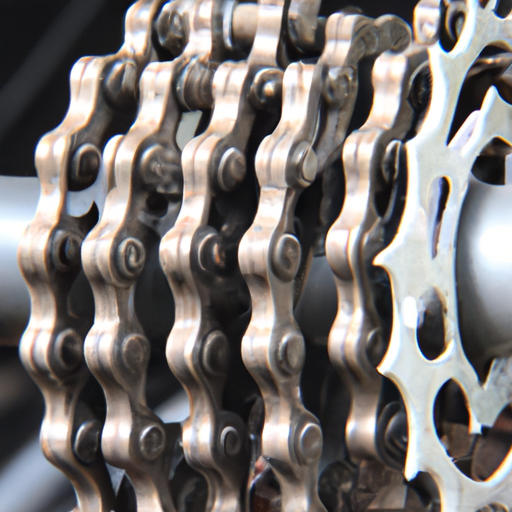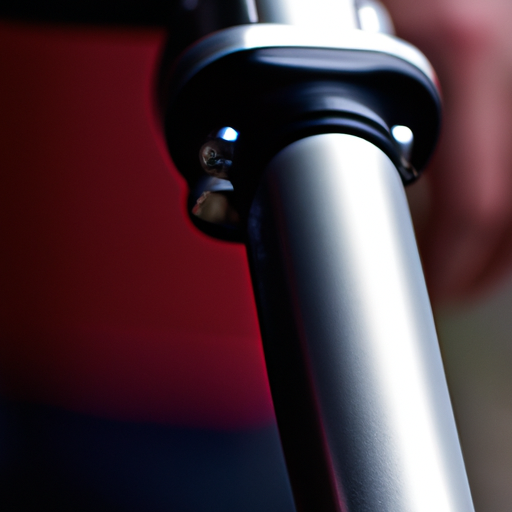How Do I Adjust The Suspension Settings On My Full-suspension Bike?
If you’ve recently become the proud owner of a full-suspension bike, you may find yourself wondering how to fine-tune its suspension to maximize your riding experience. Fortunately, adjusting the suspension settings on your full-suspension bike is easier than you might think. By making a few simple tweaks, you’ll be able to find the perfect balance between comfort and performance, allowing you to tackle rough terrains with ease and confidence. So, whether you’re a beginner or an experienced rider, let’s explore the steps you can take to ensure your full-suspension bike is dialed in just right.
Understanding Your Full-Suspension Bike
A full-suspension bike, also known as a dual-suspension bike, is a type of bicycle that features both front and rear suspension systems. These systems absorb the impact from uneven terrain, providing a smoother and more comfortable ride. Understanding the components and proper suspension settings of your full-suspension bike is crucial for a customized and optimized riding experience.
Components of a Full-Suspension Bike
There are several key components that make up a full-suspension bike. The front suspension fork and the rear shock are the main components responsible for absorbing impacts and providing suspension. The front suspension fork is located on the front wheel, while the rear shock is usually positioned between the frame and the rear wheel. These components work together to minimize the effects of rough terrain, allowing for better control and stability.
Importance of Proper Suspension Settings
Proper suspension settings are essential for maximizing the performance of your full-suspension bike. By adjusting the suspension to fit your weight, riding style, and the type of terrain you’ll encounter, you can enhance your bike’s efficiency, comfort, and handling capabilities. Neglecting to fine-tune your suspension settings can result in a suboptimal riding experience, leading to decreased control, discomfort, and even potential damage to your bike.
Types of Suspension Settings
To fully understand and optimize your full-suspension bike’s performance, you need to familiarize yourself with the different suspension settings available. The three main suspension settings to consider are sag, compression, and rebound.
Sag
Sag refers to how much the suspension compresses when the rider is positioned on the bike. It is typically measured as a percentage of the total available travel of the suspension. Adjusting sag allows you to set the bike’s initial response and overall feel. Finding the right sag ensures that your bike responds appropriately to different impacts and maximizes traction and control.
Compression
Compression refers to the amount of resistance applied to the suspension when it compresses. It affects how the bike absorbs larger impacts and how it handles rough terrain. Adjusting compression allows you to fine-tune the suspension’s response to various trail conditions, enabling you to find the perfect balance between comfort and efficiency.
Rebound
Rebound determines how quickly the suspension extends after compressing. It affects how the bike reacts to successive impacts and how it maintains contact with the ground. Adjusting rebound allows you to optimize the suspension’s ability to recover, preventing it from feeling excessively bouncy or sluggish.
Adjusting Sag
Adjusting sag is the first step in optimizing your full-suspension bike’s performance. It ensures that the suspension is properly calibrated for your weight and riding style. Follow these steps to measure and adjust sag correctly:
Measuring Sag
- Find a flat surface where you can set up your bike upright.
- Fully extend the suspension to get a reference point.
- Sit on the bike in your normal riding position, making sure to wear your usual riding gear.
- Have someone measure the distance between a fixed point on the bike and the suspension’s lowest point.
- Calculate the percentage of sag by comparing the measured distance to the total available suspension travel.
Adjusting Sag
- If the sag is too low, meaning the suspension is not compressing enough, you will need to add air pressure to the suspension or increase the preload.
- If the sag is too high, meaning the suspension is excessively compressed, you will need to release air pressure or reduce the preload.
- Make small adjustments, test the bike on different terrain, and repeat until you find the optimal sag setting for your riding style and preferences.
Adjusting Compression
Compression settings allow you to fine-tune your full-suspension bike’s ability to absorb impacts. Here’s how you can adjust the compression settings:
Understanding Compression
- Compression can be adjusted for low-speed and high-speed impacts.
- Low-speed compression affects the bike’s ability to handle smaller, more frequent bumps.
- High-speed compression controls the bike’s response to larger impacts or hard landings.
Setting Compression
- Start by adjusting the low-speed compression settings. Turning clockwise will increase compression, while turning counterclockwise will decrease it.
- Test the bike on various terrains, noting any changes in comfort, control, and overall performance.
- Fine-tune the compression settings until you find the best balance between comfort, efficiency, and the bike’s ability to absorb impacts.
Adjusting Rebound
Rebound settings determine how quickly the suspension extends after compressing. Here’s how you can adjust the rebound settings on your full-suspension bike:
Understanding Rebound
- Slower rebound settings allow the suspension to extend more slowly after compressing, making the bike feel more stable but potentially reducing traction.
- Faster rebound settings enable the suspension to extend quicker, allowing the bike to recover faster from compressions, but potentially making the bike feel bouncier.
Setting Rebound
- Begin adjusting the rebound settings by finding the middle ground – a balanced setting that neither feels too slow nor too fast.
- Test the bike on various terrains, focusing on how it feels after compressions and how it maintains contact with the ground.
- Make gradual adjustments, noting how each change affects the bike’s handling and overall performance, until you find the optimal rebound setting for your preferences.
Fine-Tuning Your Suspension
Fine-tuning your full-suspension bike’s suspension settings is an ongoing process that requires experimentation and personalization. Here are a couple of approaches to help you further refine your suspension setup:
Experimenting with Settings
Don’t be afraid to try different suspension settings and take notes on how each adjustment affects your riding experience. Start with small changes, allowing yourself time to adapt to the new settings before making further adjustments. Keep an open mind and be patient while experimenting, as finding the perfect settings can take time and practice.
Seeking Professional Help
If you’re struggling to find the optimal suspension settings or feel overwhelmed by the process, consider seeking professional help. Bike shops and suspension specialists have the expertise and experience to assist you in fine-tuning your bike’s suspension. They can provide valuable insights, recommend adjustments based on your specific needs, and help you achieve the best possible performance.
Maintenance and Inspection
Maintaining your full-suspension bike’s suspension is crucial for its longevity and performance. Regular maintenance and thorough inspections can help identify any potential issues before they escalate. Here are two essential aspects of suspension maintenance:
Regular Maintenance
Follow the manufacturer’s guidelines for regular maintenance, which typically include cleaning, lubrication, and periodic inspection of the suspension components. These routine tasks will ensure that your suspension operates smoothly and efficiently, enhancing your overall riding experience.
Inspecting for Damages
Regularly inspect your suspension components for signs of wear, damage, or leakage. Look for any cracks, dents, or loose bolts. Pay close attention to the seals, as they are critical for the proper functioning of the suspension. If you notice any abnormalities or suspect an issue with your suspension, it is advisable to consult a professional or contact the manufacturer for assistance.
By understanding the various suspension settings, properly adjusting sag, compression, and rebound, and fine-tuning your full-suspension bike, you can optimize its performance, improve your riding experience, and ensure your safety on the trails. Remember to regularly maintain and inspect your suspension to keep it in top condition. Enjoy the benefits of your customized full-suspension bike and have a great time exploring the world on two wheels!





